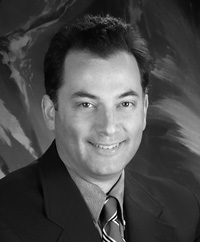
Regular podcast consumers listen to more than six hours of audio each day, according to the Boston Globe, compared with four hours for other Americans.
I recently revisited the prophetic words that Dave Buffington, owner of The Sun weekly newspaper, shared with me in December 2013.
“The message is the message,” he said. “We don’t care how people consume our product. We’ll happily give you our newspaper on a piece of paper, we’ll happily give it to you on an iPad, we’ll happily give it to you on your phone.”
I thought of that quote when I learned that The Sun, which covers Hummelstown, Hershey and Palmyra, was rolling out a free half-hour weekly podcast. Starting Feb. 26, it is available at www.sunnewspodcast.com and on iTunes.
75 million monthly listeners
If you know nothing else about podcasts, perhaps you’ve heard about the phenomenal success of NPR’s “Serial.” A spinoff of the popular “This American Life,” “Serial” drew some 1.5 million weekly listeners for last fall’s 12 weekly episodes that reexamined a years-old Baltimore County murder case.
Podcasts – simply put, the distribution of digital audio files – have been around for a decade, since the Apple iPod introduced them to the mainstream. But in the hyper-fast way that is the digital world, podcasts fell out of favor for a time but now are enjoying a rebirth.
In 2013, iTunes reached 1 billion subscriptions to podcasts. A Washington Post article from September, citing podcast data research firm RawVoice, noted that the number of unique monthly podcast listeners tripled to 75 million from 25 million five years prior.
Podcast advertising soon is expected to reach $100 million, according to the Boston Globe. And no wonder, considering that podcast regulars listen to more than six hours of audio daily, compared with four hours for other Americans.
It’s certainly easier than ever to access podcasts: smart phones are always with us, and automobiles are increasingly Internet-connected.
From an October article in New York Magazine, titled, “What’s behind the great podcast renaissance?”:
“Connected cars are a boon for the entire streaming audio industry, but they’re especially exciting for podcast makers, whose shows are perfectly suited to in-car listening. Just as TV watchers can now choose Netflix or Amazon streams over surfing channels, radio listeners will soon have a bevy of on-demand options at their disposal.”
The magazine noted that by one estimate, 50 percent of cars sold this year will be Internet-connected, with 100 percent expected by 2025.
SoxProspects.com
Many podcasts are free, which helps to explain why most of them make little or no money. But for many podcasters, it’s a way to express themselves or indulge a passion. For consumers, if there’s a niche interest out there, you probably can find a podcast serving it.
I’m partial to the SoxProspects podcast, published irregularly as a companion to SoxProspects.com; both are devoted to the Boston Red Sox minor league system and provide content that I can’t find elsewhere.
I was born in Maine in the summer of 1967, the year of the “Impossible Dream” Red Sox of Jim Lonborg and Carl Yastrzemski. I live and die with all things Red Sox, so SoxProspects has been a godsend. The SoxProspects podcast has name-checked Hershey’s Joe Gunkel a time or two. (The website ranks the right-handed pitcher as Boston’s 35th-best prospect.)
While SoxProspects has had its podcast for years, Scott Gilbert, the one-time news director for WITF-FM, recently introduced MediaSmart, a podcast offering “useful, practical information about giving effective media interviews.”
Gilbert puts his own advice into practice in his day job, working in Penn State Milton S. Hershey Medical Center’s marketing and communications department. For several years, he has produced podcasts for the medical center.
Gilbert told me he enjoys “media training — that is, working with smart people to help them effectively convey their knowledge to the media. I have also always enjoyed being behind the microphone.”
Listen during commute
He gets to do both of those things with MediaSmart, which he keeps conversational by working off bullet points as opposed to a script. His goal, he said, is “to provide tips for people who are busy and could perhaps listen during their commute or while they exercise, and for people who may not have the time or money to attend media training sessions as frequently as they’d like.”
For its part, The Sun suggests that its podcast will be of interest to a younger audience, to commuters, and to consumers who might have difficulty reading the weekly’s print edition.
The “promo episode” included host Bryce Detweiler joined by reporter Drew Weidman, who shared his feature story about an area college student who suffered – and thankfully survived – a devastating car accident on his way back to school after the holidays. Skip Becker, normally an advertising salesman, offered a folksy take on local news, including a barbecue cook-off, wedding announcements and police news.
Detweiler said it took six hours across two days to record the promo podcast, using Apple’s GarageBand application and a dynamic microphone hooked up to a mixer. The goal is to get production time down to four hours per week.
While it is free to listen to the podcast, the plan is to have a minimum of four paid 30-second advertisements that will be read during the program. Detweiler is producing the podcast with assistance from editor Charles Huth.
“I am a huge fan of podcasting as a medium and had the idea,” Detweiler told me, “but the whole office jumped on board.”


